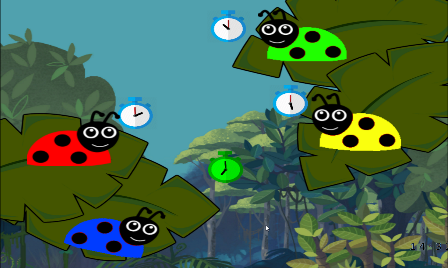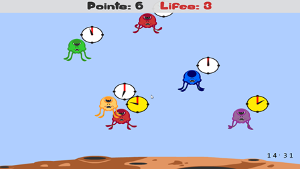Active: 2014-2019
Accessible Games for Single-Switch Interaction

Small children with disabilities, especially in the pre-school age, need to develop their skills by using games and game-like environments. The educational effect of "serious games" enables educators and caregivers to involve the kids with fun and formative activities.
 In the case of serious motor disabilities, when the interaction with a computer is severely hampered and the usage of a keyboard or pointing device is not possible, the choice of available educational games is greatly reduced.
In the case of serious motor disabilities, when the interaction with a computer is severely hampered and the usage of a keyboard or pointing device is not possible, the choice of available educational games is greatly reduced.
Our research activity in this area focuses on defining new interaction modalities for accessible games in the educational and entertainment contexts, compatible also with severe motor disabilities.
To do so, we are exploring "single-switch" interaction, i.e., user interfaces that may be operated with a single input channel (button, sensor, etc.). Single-switch user interfaces are usually realized through scanning [http://en.wikipedia.org/wiki/Switch_access_scanning], that limits the type of application to static layouts with limited interactivity and dynamicity.
To overcome the many issues of scanning for games, we adopt of a time-based interaction method that removes the layout restrictions, based on the work by Tamara Broderick and David MacKay who proposed the NOMON selection interface. We implemented the statistics and interaction methods proposed by Nomon in the Unity 2D programming framework and created the GNomon (Gaming Nomon) framework.
Thanks to the GNomon framework, we developed a set of educational games that were tested, in early 2015, with a group of children with severe disabilities. Moreover, in 2016, we developed a collaborative game based on GNomon for allowing children with and without disabilities to play together.
Downloads
- Three mini games are freely available to download (Windows-only): One Switch Demo, One Switch Ladybug, and One Switch Invaders.
Publications
- Bulgarelli Daniela, Corno Fulvio, De Russis Luigi. 2018. Collaborative Accessible Gameplay with One-Switch Interfaces. In Proceedings of 2018 IEEE Games Entertainment & Media conference (IEEE GEM).
- Sebastián Aced López, Fulvio Corno, and Luigi De Russis. 2017. Design and Development of One-Switch Video Games for Children with Severe Motor Disabilities. In ACM Transactions on Accessible Computing, vol. 10, n. 4, pp. 1-42, ISSN: 1936-7228. DOI: http://dx.doi.org/10.1145/3085957
- Sebastián Aced López. 2016. Accessible Human Computer Interaction: Video Games and Assisted Living for Persons with Severe Disabilities. PhD Thesis.
- Sebastián Aced López, Fulvio Corno, and Luigi De Russis. 2016. Clocks, Bars and Balls: Design and Evaluation of Alternative GNomon Widgets for Children with Disabilities. In Proceedings of the 2016 CHI Conference Extended Abstracts on Human Factors in Computing Systems (CHI EA '16). ACM, New York, NY, USA, pp. 1654-1660. DOI: http://dx.doi.org/10.1145/2851581.2892373
- Sebastián Aced López, Fulvio Corno, and Luigi De Russis. 2015. Can We Make Dynamic, Accessible and Fun One-Switch Video Games?. In Proceedings of the 17th International ACM SIGACCESS Conference on Computers & Accessibility (ASSETS '15). ACM, New York, NY, USA, pp. 421-422. DOI: http://dx.doi.org/10.1145/2700648.2811333
- Sebastián Aced López, Fulvio Corno, and Luigi De Russis. 2015. Playable One-Switch Video Games for Children with Severe Motor Disabilities Based on GNomon. In 7th International Conference on Intelligent Technologies for Interactive Entertainment (INTETAIN), Turin, Italy, pp. 176-185. DOI: http://dx.doi.org/10.4108/icst.intetain.2015.259620
- Sebastián Aced López, Fulvio Corno, and Luigi De Russis. 2015. GNomon: Enabling Dynamic One-Switch Games for Children with Severe Motor Disabilities. In Proceedings of the 33rd Annual ACM Conference Extended Abstracts on Human Factors in Computing Systems (CHI EA '15). ACM, New York, NY, USA, pp. 995-1000. DOI: http://dx.doi.org/10.1145/2702613.2732802

